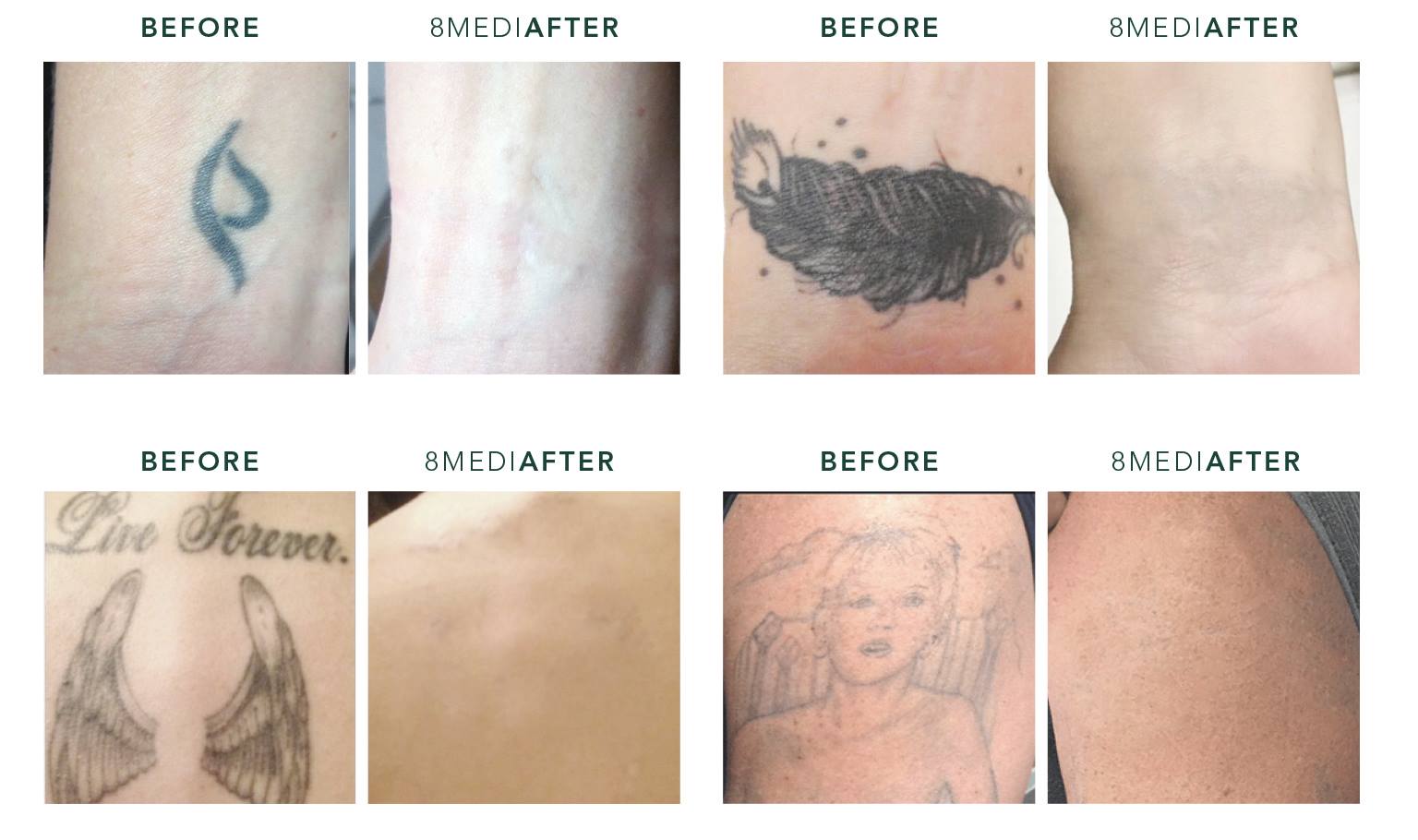
Ink & Iron: Finding the Sweet Spot Between New Tattoo and Your Workout Routine
So, you’ve just gotten some fresh ink – congrats! That new tattoo is a badge of honor, a piece of art etched onto your skin, and you’re probably itching (hopefully not literally!) to show it off. But you’re also a fitness enthusiast, someone who thrives on the endorphin rush of a good workout. The question is: How long do you have to sideline your gym routine to protect your precious new masterpiece?
This is a question that plagues many inked fitness lovers, and frankly, there’s no one-size-fits-all answer. However, understanding the risks and following some key guidelines can help you navigate this delicate balance between preserving your body art and maintaining your fitness goals. Let’s dive in!
Understanding the Tattoo Healing Process: It’s More Than Just Skin Deep
Before we even think about weights and treadmills, let’s get real about what’s happening beneath the surface of your newly tattooed skin. Getting a tattoo is essentially a controlled injury. The needles create thousands of tiny punctures, depositing ink into the dermis, the second layer of your skin. Your body’s immediate response? Inflammation, redness, and potential oozing.
This initial healing phase is crucial. Think of your tattoo as an open wound (because, well, it kind of is!). It’s susceptible to infection, which can not only ruin the artwork but also pose a serious health risk.
The Initial 24-48 Hours: Hands Off the Weights!
This is non-negotiable. Consider the first 24-48 hours after getting your tattoo as sacred ground. No gym, no strenuous activity, no exceptions! This period is all about allowing the initial inflammation to subside and the wound to begin closing.
Why so strict? Firstly, sweating profusely in the first 48 hours can create a breeding ground for bacteria. Secondly, friction from clothing or gym equipment can irritate the fresh tattoo, potentially causing damage and slowing down the healing process. Finally, increased blood flow from exercise can lead to excessive bleeding and ink leakage. Not a pretty picture, right?
The First Week: Light Activity, Heavy Caution
After the initial 48 hours, you might start feeling a bit more like yourself. The redness may have diminished, and the oozing might have slowed down. However, your tattoo is still vulnerable.
During this first week, it’s best to stick to light activities that don’t put direct pressure on the tattooed area. Think gentle walks, light stretching, or maybe some yoga focusing on poses that avoid stretching the skin around your tattoo.
Important Considerations:
- Location, Location, Location: A tattoo on your bicep will have different needs than one on your ankle. Areas that experience more movement and friction (like joints) will require more healing time.
- Size Matters: A small, simple tattoo will generally heal faster than a large, intricate piece.
- Listen to Your Body: If you feel any pain, discomfort, or excessive redness during or after activity, stop immediately!
Week Two: Gradual Reintroduction to Your Workout Routine
By the second week, your tattoo should be showing signs of significant healing. The scabbing might be starting to flake off (resist the urge to pick!), and the redness should be further reduced.
Now, you can gradually reintroduce more intense workouts. Start with lighter weights and fewer reps. Avoid exercises that directly involve the tattooed area. For example, if you have a new tattoo on your chest, skip the push-ups and bench presses for a little longer.
Key Strategies for Week Two:
- Keep it Clean: Always wash your tattoo immediately after working out with a mild, fragrance-free soap.
- Stay Hydrated: Drink plenty of water to help your skin heal from the inside out.
- Moisturize Regularly: Apply a thin layer of fragrance-free, hypoallergenic moisturizer to keep the skin hydrated and prevent excessive dryness.
Weeks Three and Four: Back in the Game, But Still Cautious
By weeks three and four, your tattoo should be well on its way to being fully healed. The scabbing should be gone, and the skin should be relatively smooth. However, even though it might look healed on the surface, the deeper layers of skin are still repairing themselves.
You can now increase the intensity of your workouts and gradually return to your regular routine. However, it’s still crucial to protect your tattoo from excessive sun exposure and friction.
Tips for Protecting Your Tattoo in Weeks Three and Four:
- Sunscreen is Your Best Friend: Apply a high-SPF, broad-spectrum sunscreen to your tattoo whenever you’re outdoors, even on cloudy days. Sun exposure can fade the ink and damage the healing skin.
- Choose Loose-Fitting Clothing: Avoid tight clothing that can rub against your tattoo and cause irritation.
- Listen to Your Skin: If you notice any signs of irritation, redness, or swelling, ease up on the workouts and give your skin a break.
Identifying Signs of Infection: When to Seek Professional Help
Even with the best care, infections can sometimes occur. It’s crucial to be aware of the signs and symptoms so you can seek medical attention promptly.
Warning Signs of a Tattoo Infection:
- Excessive Redness and Swelling: More than what’s normally expected during the initial healing phase.
- Increased Pain and Tenderness: Pain that worsens over time, rather than improving.
- Pus or Drainage: Any discharge from the tattoo that is yellow, green, or cloudy.
- Fever or Chills: These are signs of a systemic infection and require immediate medical attention.
- Red Streaks: Red lines radiating outwards from the tattoo, indicating that the infection is spreading.
If you experience any of these symptoms, consult a doctor or dermatologist immediately. Early treatment can prevent serious complications and ensure the proper healing of your tattoo.
The Importance of Aftercare: The Key to Long-Term Tattoo Health
Proper aftercare is not just about the first few weeks; it’s a lifelong commitment to preserving the vibrancy and integrity of your tattoo.
Long-Term Tattoo Care Tips:
- Stay Hydrated: Drink plenty of water to keep your skin healthy and hydrated.
- Moisturize Regularly: Apply a fragrance-free, hypoallergenic moisturizer to your tattoo daily, especially after showering or swimming.
- Protect from Sun Exposure: Sunscreen is essential for preventing fading and damage to your tattoo.
- Avoid Harsh Chemicals: Limit exposure to harsh soaps, detergents, and chemicals that can irritate the skin.
- Maintain a Healthy Lifestyle: A healthy diet and regular exercise can contribute to overall skin health and help keep your tattoo looking its best.
Choosing the Right Tattoo Artist: Prevention is Better Than Cure
The health of your tattoo starts long before you even hit the gym. Choosing a reputable and experienced tattoo artist is crucial for ensuring a safe and successful tattooing experience.
Factors to Consider When Choosing a Tattoo Artist:
- Hygiene and Sterilization: Make sure the studio is clean and that the artist uses sterile equipment.
- Experience and Skill: Look at the artist’s portfolio and choose someone who specializes in the style you want.
- Reputation and Reviews: Read online reviews and ask for recommendations from friends.
- Communication and Consultation: Choose an artist who is willing to listen to your ideas and answer your questions.
Communicating with Your Tattoo Artist: Open and Honest Dialogue
Don’t be afraid to ask your tattoo artist about their recommendations for aftercare and exercise. They are the experts and can provide personalized advice based on the size, location, and complexity of your tattoo.
Open communication with your artist can help you avoid potential problems and ensure that your tattoo heals properly.
The Mental Game: Patience is a Virtue
The most important thing to remember is to be patient. Rushing back into your workout routine too soon can jeopardize the healing process and potentially ruin your tattoo.
Listen to your body, follow the guidelines outlined above, and prioritize the health and well-being of your skin. After all, that new tattoo is an investment in yourself, and it deserves to be treated with care.
Conclusion: Ink and Iron Can Coexist, With a Little Patience
Finding the sweet spot between your new tattoo and your workout routine is all about understanding the healing process, being patient, and prioritizing proper aftercare. By following these guidelines and listening to your body, you can successfully navigate this delicate balance and enjoy both your beautiful new ink and your active lifestyle. Remember, a little patience now will ensure a lifetime of enjoying your vibrant, healthy tattoo.
FAQs: Your Burning Tattoo and Workout Questions Answered
1. Can I wear compression clothing over my new tattoo while working out?
Generally, it’s best to avoid compression clothing directly over a new tattoo, especially during the initial healing phase. The tight fit can restrict airflow, increase friction, and potentially trap bacteria, leading to irritation or infection. Opt for loose-fitting, breathable clothing instead. Once the tattoo is fully healed, compression clothing should be fine.
2. What if my tattoo is in a hard-to-avoid area, like my back?
If your tattoo is in an area that’s difficult to avoid during workouts, such as your back, focus on exercises that minimize direct pressure and friction on the area. For example, you might avoid exercises that involve lying on your back or using machines that put pressure on the tattooed area. You can also try using a barrier, like a clean, soft towel, to protect the tattoo.
3. Can I swim in a pool or ocean with a new tattoo?
Absolutely not! Swimming in pools, oceans, or hot tubs is a major no-no for new tattoos. These bodies of water are teeming with bacteria that can cause serious infections. Even chlorinated pools can be harmful due to the chemicals. Wait until your tattoo is fully healed before taking a dip.
4. What kind of moisturizer is best for a new tattoo?
The best moisturizer for a new tattoo is one that is fragrance-free, hypoallergenic, and specifically designed for sensitive skin. Look for ingredients like shea butter, cocoa butter, or vitamin E. Avoid products containing alcohol, petroleum-based ingredients, or harsh chemicals.
5. My tattoo is itchy. Is that normal?
Itching is a common symptom during the tattoo healing process. However, it’s crucial to resist the urge to scratch! Scratching can damage the healing skin and increase the risk of infection. Instead, try gently patting the area or applying a thin layer of moisturizer to soothe the itch. If the itching is severe or accompanied by other symptoms like redness, swelling, or pus, consult a doctor.









